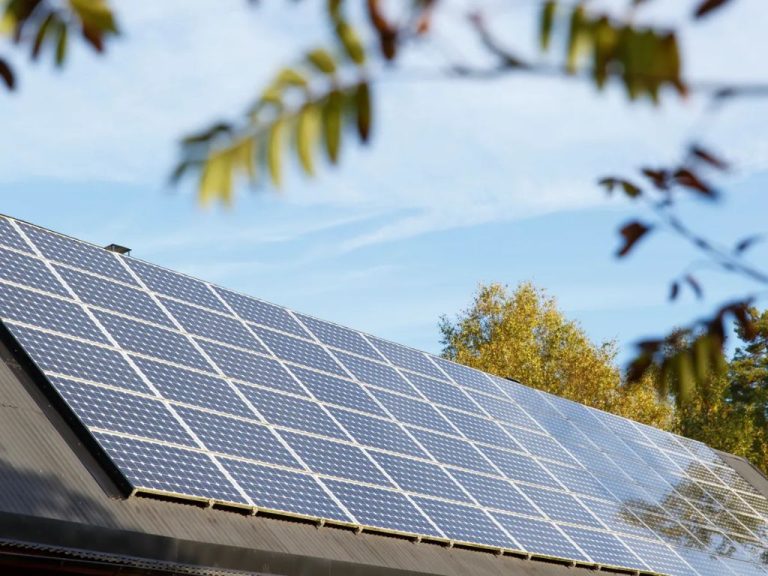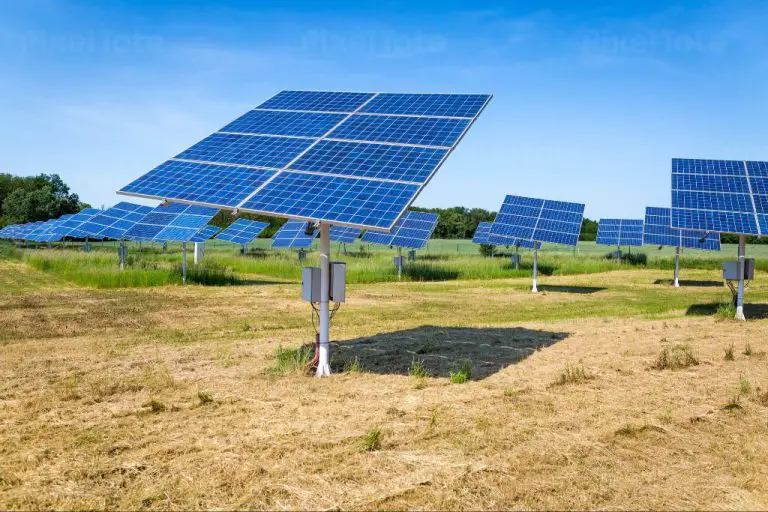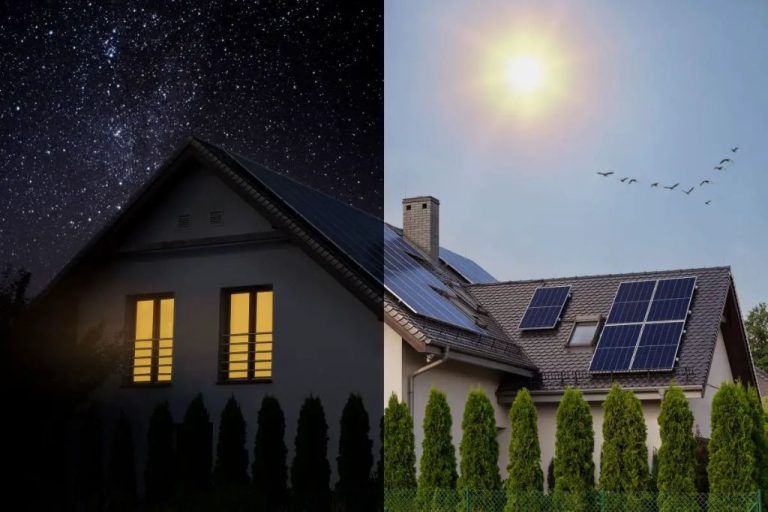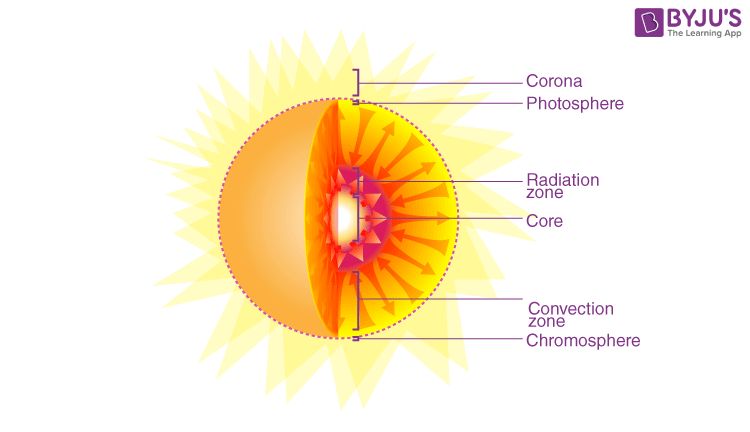Is Solar Energy A Fusion?
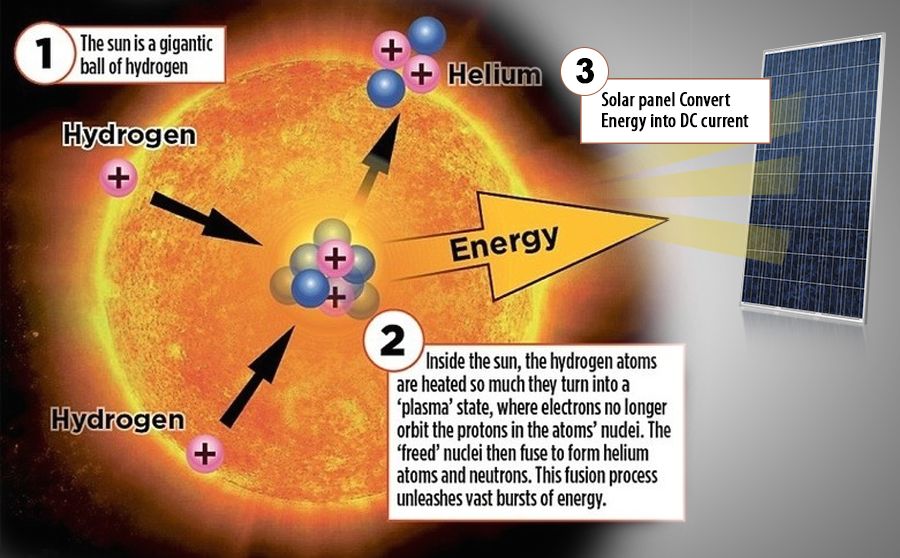
Solar energy is created by harnessing heat and light from the Sun. Solar technologies like photovoltaic panels and concentrating solar thermal plants convert the Sun’s radiation into useful energy forms that can generate electricity, provide light, hot water, and heating/cooling for homes, businesses, and industry (Solar Energy – National Geographic Education).
Nuclear fusion, on the other hand, is the process that powers the stars, including our Sun. It occurs when nuclear reactions cause light atomic nuclei to collide and combine into heavier nuclei, releasing enormous amounts of energy. Fusion power plants seek to capture this energy by fusing light isotopes of hydrogen like deuterium and tritium under extreme heat and pressure (Opinion: Renewable energy is overrated. Nuclear fusion is the future – The San Diego Union-Tribune). While fusion energy technology is still in development, it holds great promise as a future clean energy source if some key engineering challenges can be overcome.
So in summary, solar energy harnesses the Sun’s light and heat at the Earth’s surface, while fusion energy seeks to replicate the nuclear fusion reactions that occur inside the Sun.
What is Solar Energy?
Solar energy is the radiant light and heat from the sun that is harnessed using a range of ever-evolving technologies such as solar heating, solar photovoltaics, solar thermal energy, solar architecture, molten salt power plants, and artificial photosynthesis (1). It is an essential source of renewable energy and its technologies are broadly characterized as either passive solar or active solar depending on how they capture and distribute solar energy or convert it into solar power. Passive solar techniques include orienting a building to the sun, selecting materials with favorable thermal mass or light-dispersing properties, and designing spaces that naturally circulate air (2). Active solar technologies encompass solar thermal energy, solar architecture, solar heating, solar photovoltaics, and artificial photosynthesis.
The sun emits electromagnetic radiation in the form of waves and particles across the entire electromagnetic spectrum. Although ultraviolet rays make up 7% of the sun’s energy and are absorbed by the ozone layer, the remaining wavelengths get through to the Earth’s surface. Approximately half the radiation is in the visible light spectrum. The other half is mostly in the near-infrared (49%) and a small amount is in the ultraviolet spectrum (2%). This radiation can be converted directly or indirectly into useful forms of energy, such as heat and electricity (2).
Sources:
(1) https://palmetto.com/learning-center/blog/we-break-down-how-solar-energy-works-step-by-step
(2) https://www.sunrun.com/how-does-solar-energy-work
Types of Solar Energy
There are three main types of solar energy technologies: photovoltaics, concentrated solar power, and passive solar heating.
https://www.energy.gov/eere/solar/how-does-solar-work
Photovoltaics (PV) convert sunlight directly into electricity using semiconducting materials. PV systems use solar panels composed of many solar cells to absorb and convert sunlight into usable electricity. This electricity can be used to power homes, buildings, and the grid.
https://www.saurenergy.com/solar-energy-blog/exploring-the-5-main-types-of-solar-energy-pv-ste-csp-passive-solar-bipv
Concentrated solar power (CSP) systems use mirrors or lenses to concentrate a large area of sunlight onto a small area to produce heat and electricity. The concentrated light is converted to heat which drives a heat engine connected to an electrical power generator.
Passive solar heating utilizes materials and design elements to collect, store, and distribute solar energy for space heating and cooling. This can include strategically placed windows, thermal mass materials that retain heat, and overhangs or shades to minimize heat gain in summer.
What is Nuclear Fusion?
Nuclear fusion is the process by which two light atomic nuclei combine to form a single heavier one while releasing enormous amounts of energy. This occurs when the nuclei are subjected to extremely high temperatures and pressures, causing them to overcome their mutual electrostatic repulsion. The easiest fusion reaction fuels are deuterium and tritium, which can fuse together to form a helium nucleus. Fusion reactions provide the power that fuels stars like our sun.
According to the IAEA, “Fusion reactions take place when the nuclei of two light atoms approach each other so closely that the nuclear force which attracts them together exceeds the electrostatic force that tends to make them repel each other. When this happens, the nuclei merge or ‘fuse’ together.” [1] The energy released originates from the conversion of mass into energy, in line with Einstein’s equation E=mc2. This massive energy release from fusing lighter nuclei into heavier ones is what makes fusion so appealing as an energy source.
As Space.com explains, “In stars, the extreme pressure and temperature forces the nuclei together, fusing lighter hydrogen (the lightest element) atoms into helium (the second lightest element). Each time atoms fuse, they release energy. Newly fused atoms have less mass than the sum of the masses of the atoms that formed them.” [2] This mass deficit gets converted into energy. The fusion process converts hydrogen, the universe’s most abundant element, into helium.
[1] https://www.iaea.org/newscenter/news/what-is-nuclear-fusion
[2] https://www.space.com/what-is-nuclear-fusion
Fusion vs Fission
Nuclear fusion and nuclear fission are two different types of reactions that release energy due to the presence of high-powered atomic bonds between particles found within a nucleus. In fission, energy is released when heavy radioactive nuclei (like uranium and plutonium) are split into smaller nuclei. In fusion, energy is released when the nuclei of lighter atoms like hydrogen are combined to form new heavier nuclei (helium nuclei).
The key difference between fusion and fission lies in the particles that are combined or split, and the amount of energy that is released. In fission, a heavy unstable nucleus splits and energy is released. In fusion, two light nuclei combine to form a heavier, more stable nucleus and energy is released. Fusion reactions result in the release of significantly larger amounts of energy than fission reactions (https://www.twi-global.com).
To summarize:
- Fission splits heavier atoms like uranium or plutonium into smaller atoms.
- Fusion combines lighter atoms like hydrogen into heavier atoms like helium.
- Fission reactions release less energy than fusion reactions.
Fusion Energy Challenges
One of the main challenges with fusion energy is the extreme temperatures required to produce meaningful amounts of power. Fusion reactions occur when light atomic nuclei fuse together to form heavier nuclei, releasing enormous amounts of energy. But for fusion to occur, the fuel must be heated to temperatures over 100 million degrees Celsius. According to the American Security Project, “One of the central challenges of fusion energy is the temperature required to produce meaningful amounts of fusion power from an ionized gas of hydrogen isotopes” (https://www.americansecurityproject.org/why-fusion-is-difficult/).
Not only are these temperatures difficult to achieve, but they present challenges containing the plasma, which is the superheated state of matter that fusion fuel enters. The GAO report on fusion energy explains, “The plasma can interact with and damage the walls of the containment vessel. To avoid this interaction, the plasma has to be suspended in a vacuum using magnetic fields or inertial confinement” (https://www.gao.gov/assets/gao-23-105813.pdf). Developing containment systems that can withstand these extreme temperatures remains a key hurdle for harnessing fusion power.
Fusion Reactor Designs
There are several designs being explored for fusion reactors, with the most common being the tokamak, stellarator, and inertial confinement designs. A tokamak is a donut-shaped fusion reactor that uses magnetic fields to contain and control the fusion plasma (REF: https://www.canarymedia.com/articles/nuclear/this-tiny-fusion-reactor-is-made-out-of-commercially-available-parts). The plasma particles move in a spiral motion around the toroidal chamber, and the magnetic field keeps the plasma away from the walls. Major tokamak experiments include the Joint European Torus (JET) and ITER reactors.
A stellarator is similar to a tokamak but uses a twisted design to achieve better plasma stability and confinement through the magnetic fields (REF: https://www.sciencedirect.com/topics/engineering/fusion-reactor). This removes the need for current in the plasma to confine it. The largest stellarator experiment is the Wendelstein 7-X in Germany.
Inertial confinement fusion uses lasers or particle beams focused on a target containing fusion fuel, compressing and heating it to fusion conditions. Designs like the National Ignition Facility use this approach. The compression happens faster than the fuel disassembles, allowing fusion reactions to occur.
Fusion Energy Potential
Nuclear fusion has the potential to provide virtually limitless clean energy with minimal waste and pollution. Some of the key benefits of fusion energy include:
Abundant fuel – Fusion fuel sources like deuterium can be readily extracted from seawater, providing a nearly inexhaustible supply of fuel. According to General Fusion, there is enough deuterium in the world’s oceans to power the planet for millions of years.
Minimal waste – Fusion reactions produce much less radioactive waste than fission reactions and the radioactivity decays rapidly. Within 100 years, fusion waste radioactivity decreases to the level of coal ash waste.
High energy density – Fusion releases over 4 million times more energy per kilogram than burning coal, oil or gas. This high energy density means fusion could provide substantial amounts of power from very little fuel.
Overall, if achieved, fusion energy could provide abundant, clean and safe energy to support global development for generations to come.
Comparison of Solar and Fusion
One major difference between solar and fusion energy is that solar energy is considered renewable while fusion is not. The sun provides a continuous and unlimited supply of solar energy that can be harnessed on Earth, making solar a renewable resource. Fusion energy, in contrast, relies on limited fuels like hydrogen isotopes that would eventually be used up, making it a non-renewable resource (source).
Additionally, solar power and fusion power technologies have vastly different levels of maturity. Solar energy technology is already well-established and widely deployed around the world. On the other hand, fusion energy is still in the experimental and development stages, with the first fusion reactors not expected to come online until at least the 2030s (source). While fusion holds great potential, the technology still faces significant hurdles before being commercially viable.
In summary, solar energy is a mature renewable resource while fusion is an emerging non-renewable energy source. Both have advantages and disadvantages that must be weighed when comparing their roles in future energy systems.
Conclusion
In summary, solar energy and fusion energy are very different forms of energy production. Solar energy relies on harnessing the sun’s light and heat using photovoltaic panels or concentrated solar power. It is a renewable energy source. Fusion energy seeks to replicate the process that powers the sun and stars by fusing atomic nuclei together to release energy. While fusion holds great promise as a potential future energy source, the technology is still in early research and development stages.
The key differences between solar and fusion energy are:
- Solar energy captures the sun’s radiant light and heat, while fusion energy replicates the nuclear fusion reactions within stars.
- Solar power is a renewable energy source, while fusion fuel sources are non-renewable.
- Solar energy technologies are commercially available today, whereas fusion is still an experimental technology.
- Solar has lower energy density than fusion, which has the potential for massive energy output.
- Solar energy does not create radioactive waste, while fusion reactors will produce some radioactive byproducts.
In summary, solar energy and fusion represent very distinct approaches to generating power, with different mechanisms, fuel sources, stages of technological maturity, and potential risks and benefits.

